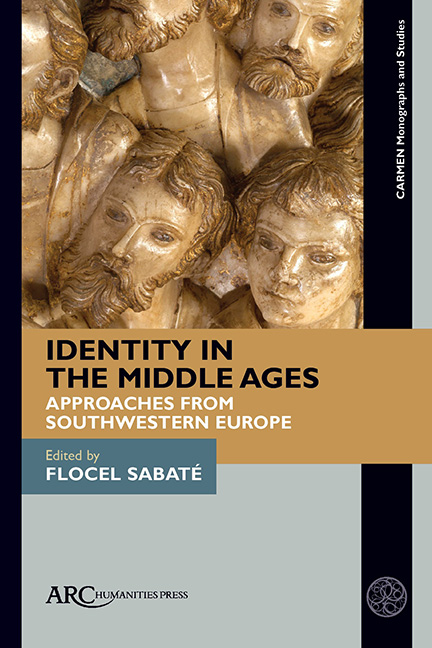Book contents
Introduction. Identity in the Middle Ages
Published online by Cambridge University Press: 20 January 2022
Summary
He had no recollection of anything that he had done. He lies in wait for the beasts in the woods, killing them, and then eating the venison raw. Thus he dwelt in the forest like a madman or a savage, until he came upon a little, low-lying house belonging to a hermit, who was at work clearing his ground. When he saw him coming with nothing on, he could easily perceive that he was not in his right mind; and such was the case, as the hermit very well knew.
According to the twelfth-century tale by Chrétien de Troyes, the knight Yvain lived wild in the forest, naked, killing animals, and eating raw meat because he did not remember any of his previous acts and had gone mad. So, eating uncooked meat and going without clothes demonstrated behaviour inappropriate for a mentally healthy human being, and if someone adopted this behaviour it was because he had forgotten everything he had done throughout his life and had lost awareness of who he was. He would only revert to behaviour considered normal when he regained the knowledge of who he was, in other words, when he returned to his identity. The starting point is thus the individual's own identity.
Identity of the Individual
The core of the medieval human being was thus identity; being aware of who one was and where one came from and so be able to adopt adequate behaviour and determine a future path in one's life. Does this suppose an awareness of the individual in itself? It is highly significant that historians do not agree on the elements that indicate an assumption of an individual identity. In fact, there is a whole series of elements that, taken together, especially between the twelfth and fifteenth centuries, highlight the progressive growth of awareness of an individual's personal identity.
Firstly, there was the spread of Roman law around Europe in the twelfth century, arising from an academic artificiality that guaranteed it would be balanced and fair, and this supplied a homogenizing legal basis adaptable to every reality. This set out the legal elements for each unique individual, with his rights, duties, and responsibilities, under relevant legislative bodies, whilst not forgetting, at a lower level, the customs based on the “consent of the individuals themselves.”
- Type
- Chapter
- Information
- Identity in the Middle AgesApproaches from Southwestern Europe, pp. 1 - 54Publisher: Amsterdam University PressPrint publication year: 2021

